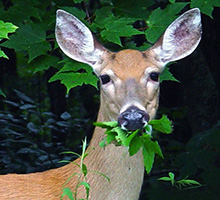Winter Deer Repellent
Last Updated on March 3, 2025 New Jersey is home to a very high deer population. While many of us enjoy the wildlife that New Jersey has to offer, deer are destructive to landscape plants. Damage to plants in the landscape is more prevalent in the winter. There are several reasons for this. First, the […]
Winter Deer Repellent Read More »



